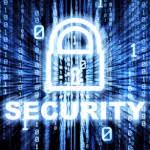Can Security Culture Reduce Insider Threats? Building a Fortified Defense from Within.
Insider threats are a persistent and evolving danger for organizations of all sizes. Unlike external attacks that breach the perimeter, insider threats originate from individuals with authorized access to sensitive information and systems. This could be a disgruntled employee, a negligent user, or even a malicious actor actively seeking to exploit their position. While technological solutions like firewalls and intrusion detection systems are crucial, they often fall short in preventing insider threats. This is where the power of a strong security culture comes into play.
Understanding the Insider Threat Landscape
Insider threats can stem from various motivations:
* Malice: Driven by revenge, financial gain, or ideological beliefs, malicious insiders deliberately seek to harm the organization.
* Negligence: Unintentional actions, such as weak password practices, clicking on phishing links, or failing to follow security protocols, can inadvertently expose the organization to risk.
* Credential Theft: External attackers can compromise employee credentials, effectively becoming insiders with access to sensitive data.
* Oversight/Process Errors: Inadequate access controls or poorly defined security procedures can create opportunities for unauthorized access.
Understanding these motivations is vital to crafting effective preventative measures. A robust security culture tackles these diverse factors head on, making it a critical component of any comprehensive security strategy.
The Power of a Security Conscious Workforce
A strong security culture fosters an environment where security is not just a department’s responsibility, but a shared value embraced by every employee.
Here’s how it helps mitigate insider threats:
* Training and Awareness: The First Line of Defense: Regular training programs are fundamental.
They should educate employees on:
* Identifying phishing attempts and other social engineering tactics.
* Secure password practices and the importance of multi-factor authentication.
* Data handling protocols and appropriate data usage.
* Company policies regarding data security and privacy.
* How to recognize and report suspicious activity.
By equipping employees with the knowledge and skills to identify and respond to potential threats, organizations empower them to become active participants in security.
* Promoting a Culture of Reporting: A crucial aspect of a strong security culture is creating a safe space for employees to report concerns without fear of reprisal. This could include witnessing suspicious behavior, discovering potential security vulnerabilities, or even recognizing their own mistakes. Anonymity options can further encourage reporting. Open communication channels, such as easily accessible reporting hotlines or dedicated email addresses, are essential.
* Clear Policies and Procedures: Setting the Boundaries: Comprehensive and well-communicated security policies and procedures act as a deterrent and a guide.
These should cover:
* Data access controls and the principle of least privilege.
* Acceptable use of company devices and networks.
* Incident response procedures and reporting protocols.
* Data classification and handling guidelines.
* Physical security protocols.
Clearly defined rules minimize ambiguity and establish a framework for responsible data handling, reducing the likelihood of both intentional and unintentional security breaches.
* Emphasizing a Shared Responsibility: Security should be integrated into the company’s values and culture. When employees understand how their actions contribute to the overall security posture, they are more likely to take ownership and adhere to security protocols. Leadership should consistently reinforce the importance of security and model responsible behavior.
Building a Strong Security Culture: Key Considerations
Building a robust security culture is an ongoing process that requires consistent effort and commitment from all levels of the organization.
Here are some essential considerations:
* Leadership Commitment: Strong leadership support is critical for fostering a culture of security. Leaders must champion security initiatives and demonstrate their commitment to protecting sensitive information.
* Customized Training: Training programs should be tailored to the specific roles and responsibilities of employees. This ensures that the information is relevant and engaging.
* Regular Reinforcement: Security awareness is not a one-time event. Regular refreshers, simulations, and reminders are necessary to keep security top of mind.
* Positive Reinforcement: Recognizing and rewarding employees for demonstrating good security practices can further incentivize responsible behavior.
* Continuous Improvement: Security threats are constantly evolving. Organizations must continuously assess their security culture and adapt their strategies to address emerging risks.
Conclusion: A Proactive Defense Against Insider Threats
While technological solutions are essential, a strong security culture forms the bedrock of defense against insider threats. By fostering awareness, promoting open communication, establishing clear policies, and emphasizing shared responsibility, organizations can empower their employees to become active participants in protecting sensitive information. Building a strong security culture is not just about preventing breaches; it’s about creating a resilient and secure organization that values its people and its data. It’s a proactive approach that significantly reduces the risk of insider threats and strengthens the overall security posture.







